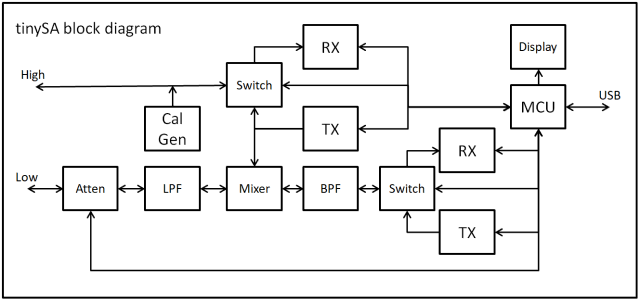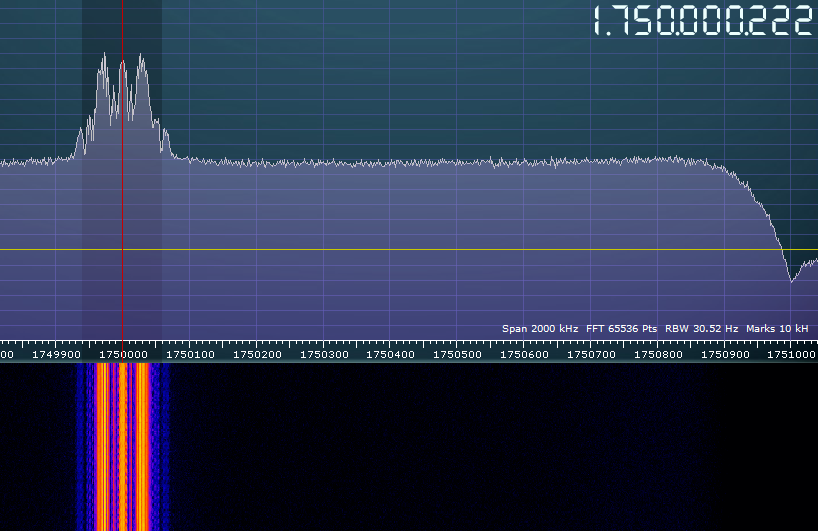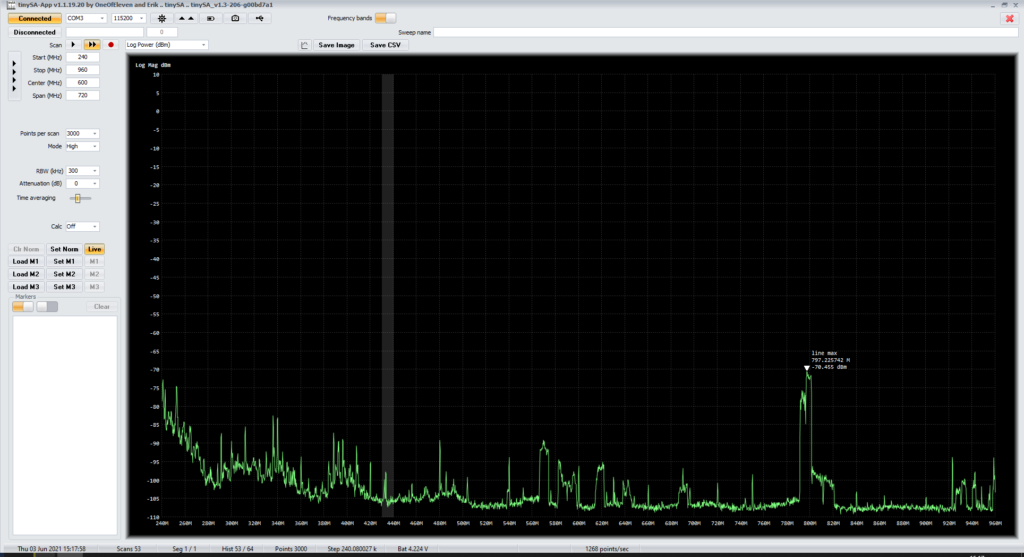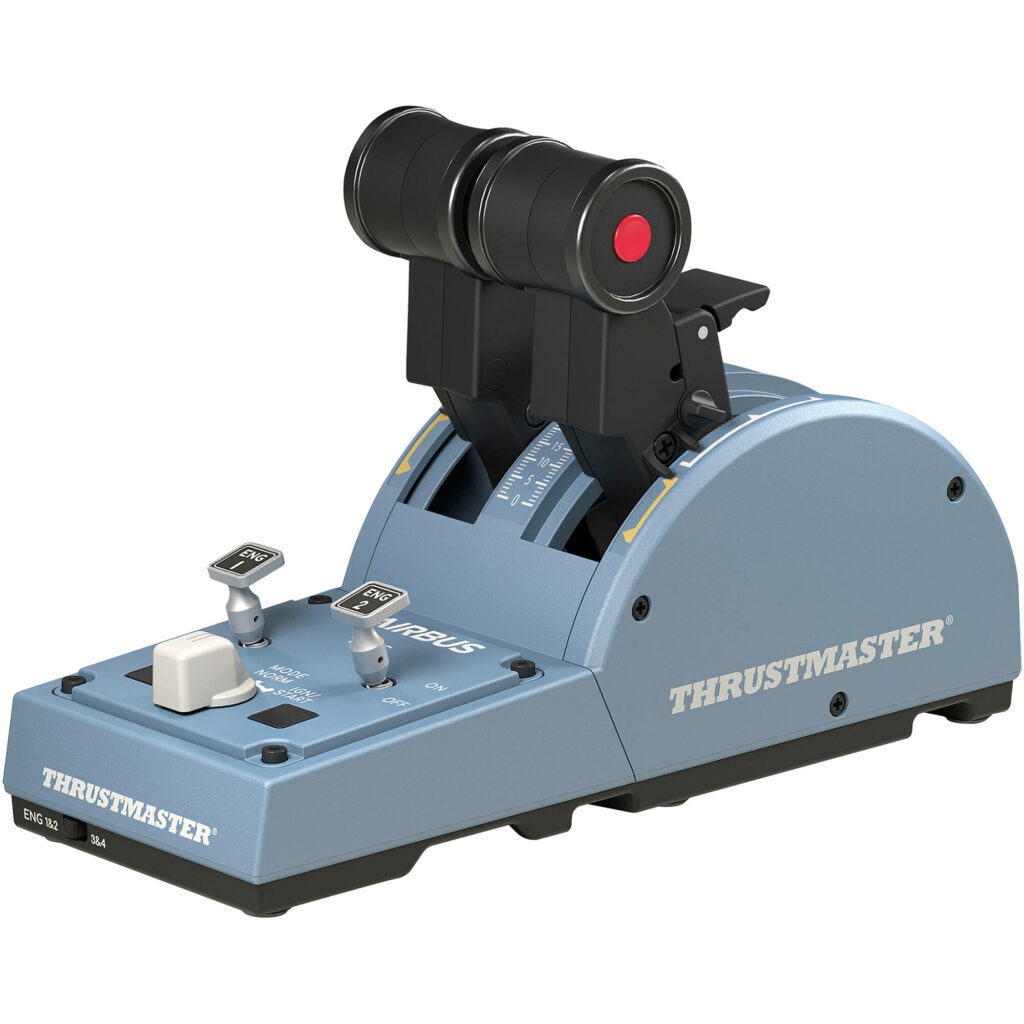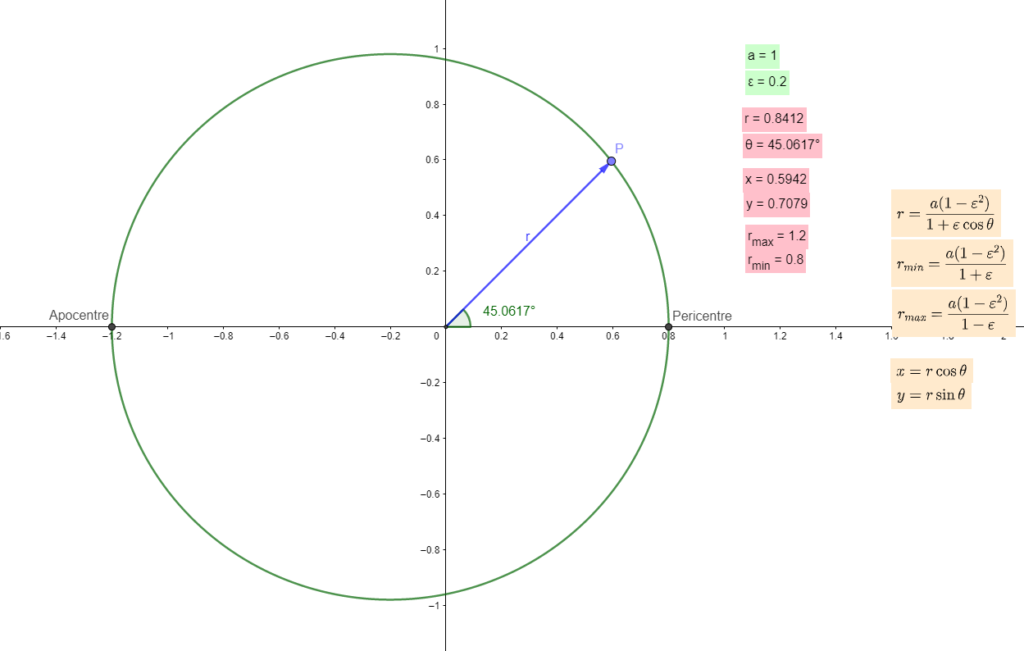The TinySA is a low cost portable spectrum analyser that also functions as a signal generator, this is a true spectrum analyser that has a wide dynamic range and can measure a signal up to 960 MHz, it is developed by Erik Kaashoek and has open source firmware but not hardware.
It features a 2.8″ LCD color touchscreen in a 90×58 mm plastic case, it includes a rechargeable internal 650mAh battery for portable use but can also be powered and recharged by the included USB C cable, it has two SMA female ports for input and output and a jog switch for additional control.
Hardware
The TinySA is primarily designed to operate between 0.1 to 350 MHz, input and output for this range uses the low SMA port, this includes a 0-31dB attenuator (1dB steps), the minimum RBW (Resolution BandWidth) is 3 kHz giving it a reasonably good signal resolution, it has a maximum of 290 measurement points when not connected to a PC and overall RF performance is decent, keeping in mind this is portable and low cost.
The high port operates between 240 to 960 MHz and is lower quality than the low port, but still quite functional for many usage cases, this also includes the calibration signal generator fed from a 30MHz TCXO which is used to calibrate the level of the low port, a single level attenuator is included which varies from 22.5dB to 40dB depending on frequency, image suppression of this port is poor so it should be considered as a free extra rather than the main purpose of the TinySA.
Overall the hardware is exceptionally good for the price, but you should not expect similar performance to a modern spectrum analyser, it is however more than good enough for most applications that do not require high precision measurements.
Included with the package is two SMA male cables and a SMA female to female adapter, as well as a small SMA extendable antenna, although mine broke pretty quickly.
Signal Generator
The TinySA also functions as an excellent signal generator, note that this cannot be used at the same time as the spectrum analyser function, the low port can put out a 0.1 to 350 MHz sine signal between -76 and -7dBm, it can also perform a frequency and level sweep as well as AM, Narrowband FM and Wideband FM modulation making it extremely versatile.
The high port can also put out a signal between 240 to 960 MHz square wave, with a level between -38 and +16dBm, as well as frequency sweep and narrow and wide FM modulation, it’s important to note that being a square wave there is a very high harmonic content which easily exceeds 2GHz making this capable of producing a signal in the many GHz range, as such it should never be used to drive a power amplifier and antenna.
Software
The software is extremely well made and easy to use, and for the most part reliable although I have had the occasional freeze, even with the small touchscreen it’s quite usable by those possessing fat fingers, the firmware is easy to update and impossible to brick due to mistakes making it very user friendly.
Software for PC use is also available for Windows and limited use with Linux, this can extend the number of measurement points to many thousands giving even more resolution.
Overall
I’m very impressed by the value for money offered by the TinySA, normally for a spectrum analyser you’d need to pay several hundred pounds, to get a reasonably similar alternative for $50 is huge, even though it’s more limited, the functionality is perfectly good for many usage applications such as verifying the output of a radio, tuning filters, RFI and EMI testing and much more, as such any electronics lab should have one of these as a must buy item.
Beware that there are some poor clones being sold out there that may perform much worse, an official list of sellers is available on the wiki.

